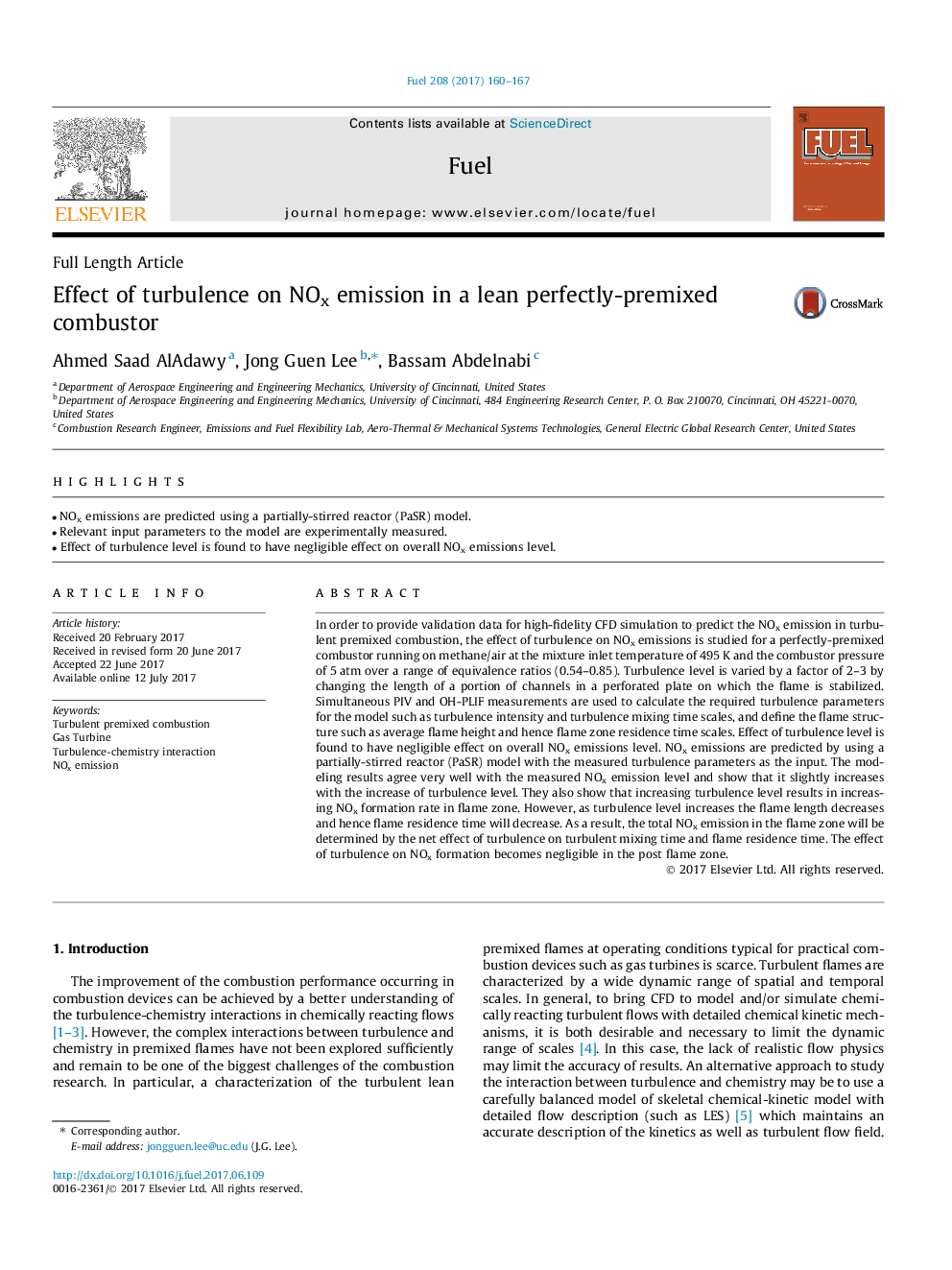| کد مقاله | کد نشریه | سال انتشار | مقاله انگلیسی | نسخه تمام متن |
|---|---|---|---|---|
| 6474069 | 1424956 | 2017 | 8 صفحه PDF | دانلود رایگان |

- NOx emissions are predicted using a partially-stirred reactor (PaSR) model.
- Relevant input parameters to the model are experimentally measured.
- Effect of turbulence level is found to have negligible effect on overall NOx emissions level.
In order to provide validation data for high-fidelity CFD simulation to predict the NOx emission in turbulent premixed combustion, the effect of turbulence on NOx emissions is studied for a perfectly-premixed combustor running on methane/air at the mixture inlet temperature of 495Â K and the combustor pressure of 5Â atm over a range of equivalence ratios (0.54-0.85). Turbulence level is varied by a factor of 2-3 by changing the length of a portion of channels in a perforated plate on which the flame is stabilized. Simultaneous PIV and OH-PLIF measurements are used to calculate the required turbulence parameters for the model such as turbulence intensity and turbulence mixing time scales, and define the flame structure such as average flame height and hence flame zone residence time scales. Effect of turbulence level is found to have negligible effect on overall NOx emissions level. NOx emissions are predicted by using a partially-stirred reactor (PaSR) model with the measured turbulence parameters as the input. The modeling results agree very well with the measured NOx emission level and show that it slightly increases with the increase of turbulence level. They also show that increasing turbulence level results in increasing NOx formation rate in flame zone. However, as turbulence level increases the flame length decreases and hence flame residence time will decrease. As a result, the total NOx emission in the flame zone will be determined by the net effect of turbulence on turbulent mixing time and flame residence time. The effect of turbulence on NOx formation becomes negligible in the post flame zone.
Journal: Fuel - Volume 208, 15 November 2017, Pages 160-167